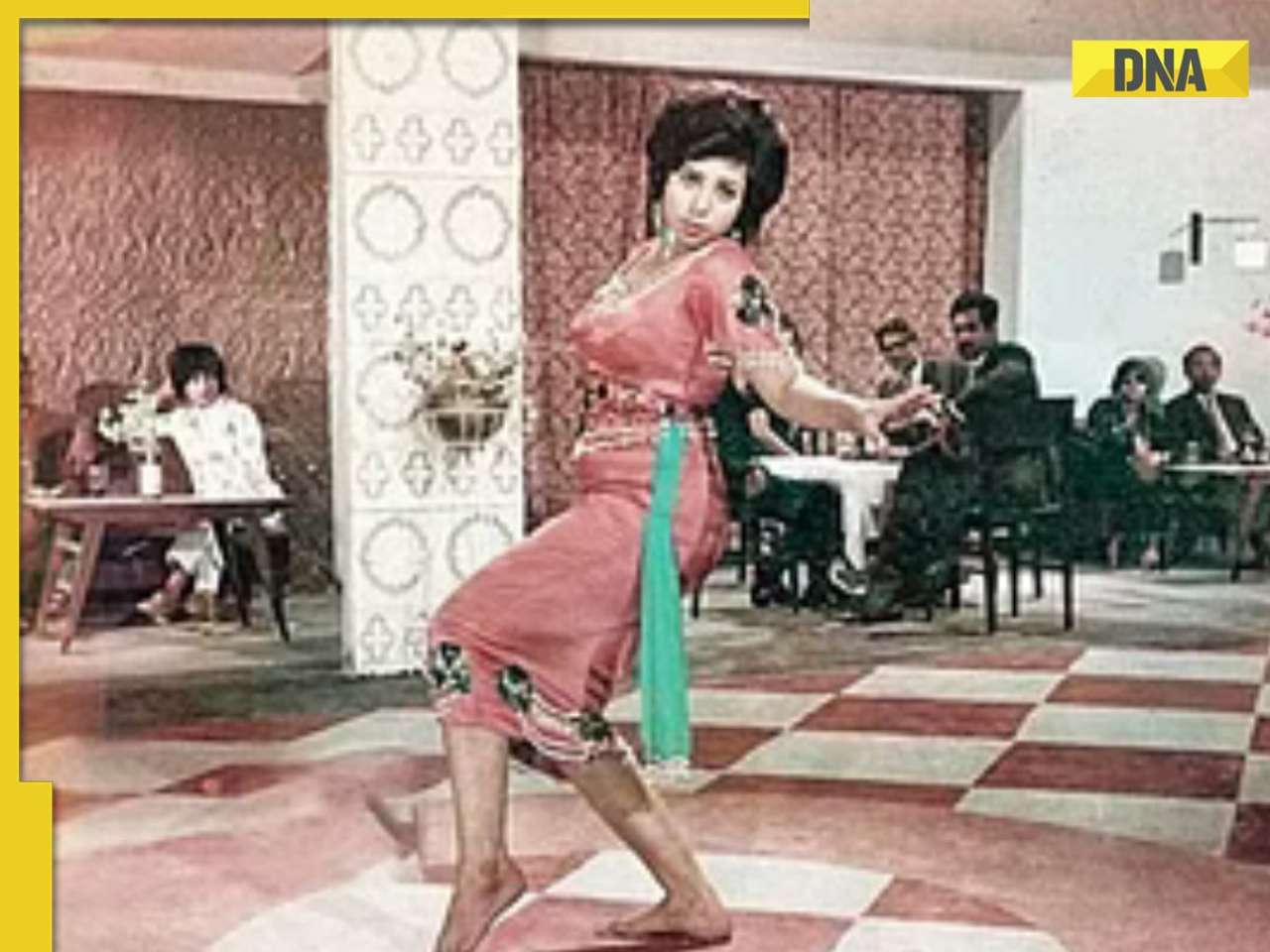The American bard and many a likeminded person, who have denounced billboards for so long, have reason to cheer now.
OOH media owners will need to invest in technology beyond hoardings soon, say experts
MUMBAI: “Indeed, unless the billboards fall, I’ll never see a tree at all.”
—Ogden Nash
The American bard and many a likeminded person, who have denounced billboards for so long, have reason to cheer now.
Even diehard patrons are looking beyond billboards, once the favourite prop for the outdoor advertising industry. Unlike in the past, the cash-rich new entrants in the out-of-home (OOH) advertising are investing in areas other than conventional hoardings.
Take for example privately-funded Laqshya, which has invested more in non-billboard-based media. Other players are also experimenting with new forms such as OOH furniture, transit media and digital signages. Even Digital Signage Networks (DSN) and OOH Media are mainly focussed on digital screens that allow multiple-utilisation of inventory for a certain target audience.
Soumitra Bhattacharya, CEO, Laqshya Outdoors, says, “The OOH industry is changing, so we’re adapting to it. Laqshya’s acquisition strategy is based on media other than billboards. Mostly, it’s advertiser-driven. If his objectives are not met through hoardings, it’s natural for us to provide him with options. But that doesn’t mean we’re ruling out hoardings from our business completely.”
Internationally, the out-of-home (OOH) media sector has seen an increasing number of street-signages adapting to local environment and, at times, even jaw-dropping infrastructure.
But in India, the market has largely remained indifferent to it, primarily due to lack of innovation amongst OOH media specialists and slow absorption of new technologies.
Some players in the business say the Indian market is different.
Indrajit Sen, CEO, Stroer India, says a certain herd mentality is visible in use of hoardings.
“Innovation and moving beyond hoardings is inevitable since the OOH advertising now gives a margin of only 25-30% against 70-80% even 6-7 years ago. Today, rising family incomes mean less dependence on hoardings on their rooftops,” he says.
The local civic administrations such as the Bombay Municipal Corporation (BMC) believe hoardings lack aesthetic quality. So, they now allow the private sector to maintain civic amenities in exchange for advertising rights and FSI (floor space index) benefits.
R A Rajeev, additional municipal commissioner, Greater Mumbai, says outdoor media owners often flout norms.
“In the race for a few more bucks, advertising industry compromises on safety and security of hoarding structures and also add to the clutter,” Rajeev said during his address at the Outdoor Advertising Convention (OAC) on Friday.
The signs are clear that thousands of outdoor media owners, currently starved of funding in a largely unorganised OOH media sector, will need to adapt and invest more in OOH media beyond billboards and hoardings.
Advertiser needs are evolving too. This is in line with changing ad spend patterns as media plans slowly become less dependant on television advertising. Siddharth Mehra, AGM— marketing, Spice Mobile, says, “An advertiser now seeks more engagement and connect through OOH media. Unless the message is really strong, simple hoardings have to make way for more dynamic outdoor media.”
However, advertising veterans exercise caution and advise not to rule out billboards yet.
Mangesh Borse, director, Symbiosis Advertising, believes large-format advertising, primarily through billboards, will continue to be a preferred part in media plans.
Borse alluded to brands such as Amul, which used topical billboard advertising to establish itself. “Even in the US, after its initial tryst with street furniture and transit media, the share of this form of OOH advertising actually went down. Billboards are noticed, and the bigger they are, the better is the impact,” Borse said.
Sam Balsara, chairman and MD, Madison Communications, says, “There’s a sense that we’re trying to fix something that isn’t broke yet. At 7% of the ad pie, OOH media grew at 28% last year. So, certainly something must be right about the existing majority share of billboards. But let’s understand that outdoor is an intermediate business. Doubling the prices won’t mean the market will double.”
c_arcopol@dnaindia.net
![submenu-img]() Anant Raj Ventures into tier 2 and tier 3 cities, pioneering growth in India’s real estate sector
Anant Raj Ventures into tier 2 and tier 3 cities, pioneering growth in India’s real estate sector![submenu-img]() Sophie Turner reveals she wanted to terminate her first pregnancy with Joe Jonas: 'Didn't know if I wanted...'
Sophie Turner reveals she wanted to terminate her first pregnancy with Joe Jonas: 'Didn't know if I wanted...'![submenu-img]() Meet outsider who was given no money for first film, battled depression, now charges Rs 20 crore per film
Meet outsider who was given no money for first film, battled depression, now charges Rs 20 crore per film![submenu-img]() This is owner of most land in India, owns land in every state, total value is Rs...
This is owner of most land in India, owns land in every state, total value is Rs...![submenu-img]() Meet man who built Rs 39832 crore company after quitting high-paying job, his net worth is..
Meet man who built Rs 39832 crore company after quitting high-paying job, his net worth is..![submenu-img]() Meet woman who first worked at TCS, then left SBI job, cracked UPSC exam with AIR...
Meet woman who first worked at TCS, then left SBI job, cracked UPSC exam with AIR...![submenu-img]() Meet engineer, IIT grad who left lucrative job to crack UPSC in 1st attempt, became IAS, married to an IAS, got AIR...
Meet engineer, IIT grad who left lucrative job to crack UPSC in 1st attempt, became IAS, married to an IAS, got AIR...![submenu-img]() Meet Indian woman who after completing engineering directly got job at Amazon, then Google, Microsoft by using just...
Meet Indian woman who after completing engineering directly got job at Amazon, then Google, Microsoft by using just...![submenu-img]() Meet man who is 47, aspires to crack UPSC, has taken 73 Prelims, 43 Mains, Vikas Divyakirti is his...
Meet man who is 47, aspires to crack UPSC, has taken 73 Prelims, 43 Mains, Vikas Divyakirti is his...![submenu-img]() IIT graduate gets job with Rs 100 crore salary package, fired within a year, he is now working as…
IIT graduate gets job with Rs 100 crore salary package, fired within a year, he is now working as…![submenu-img]() DNA Verified: Is CAA an anti-Muslim law? Centre terms news report as 'misleading'
DNA Verified: Is CAA an anti-Muslim law? Centre terms news report as 'misleading'![submenu-img]() DNA Verified: Lok Sabha Elections 2024 to be held on April 19? Know truth behind viral message
DNA Verified: Lok Sabha Elections 2024 to be held on April 19? Know truth behind viral message![submenu-img]() DNA Verified: Modi govt giving students free laptops under 'One Student One Laptop' scheme? Know truth here
DNA Verified: Modi govt giving students free laptops under 'One Student One Laptop' scheme? Know truth here![submenu-img]() DNA Verified: Shah Rukh Khan denies reports of his role in release of India's naval officers from Qatar
DNA Verified: Shah Rukh Khan denies reports of his role in release of India's naval officers from Qatar![submenu-img]() DNA Verified: Is govt providing Rs 1.6 lakh benefit to girls under PM Ladli Laxmi Yojana? Know truth
DNA Verified: Is govt providing Rs 1.6 lakh benefit to girls under PM Ladli Laxmi Yojana? Know truth![submenu-img]() In pics: Taarak Mehta Ka Ooltah Chashmah actress Deepti Sadhwani dazzles in orange at Cannes debut, sets new record
In pics: Taarak Mehta Ka Ooltah Chashmah actress Deepti Sadhwani dazzles in orange at Cannes debut, sets new record![submenu-img]() Ananya Panday stuns in unseen bikini pictures in first post amid breakup reports, fans call it 'Aditya Roy Kapur's loss'
Ananya Panday stuns in unseen bikini pictures in first post amid breakup reports, fans call it 'Aditya Roy Kapur's loss'![submenu-img]() Remember Harsh Lunia? Just Mohabbat child star, here's how former actor looks now, his wife is Bollywood's popular...
Remember Harsh Lunia? Just Mohabbat child star, here's how former actor looks now, his wife is Bollywood's popular...![submenu-img]() Mother's Day 2024: Bollywood supermoms who balance motherhood, acting, and run multi-crore businesses
Mother's Day 2024: Bollywood supermoms who balance motherhood, acting, and run multi-crore businesses![submenu-img]() Rocky Aur Rani's Golu aka Anjali Anand shocks fans with drastic weight loss without gym, says fitness secret is...
Rocky Aur Rani's Golu aka Anjali Anand shocks fans with drastic weight loss without gym, says fitness secret is...![submenu-img]() Haryana Political Crisis: Will 3 independent MLAs support withdrawal impact the present Nayab Saini led-BJP government?
Haryana Political Crisis: Will 3 independent MLAs support withdrawal impact the present Nayab Saini led-BJP government?![submenu-img]() DNA Explainer: Why Harvey Weinstein's rape conviction was overturned, will beleaguered Hollywood mogul get out of jail?
DNA Explainer: Why Harvey Weinstein's rape conviction was overturned, will beleaguered Hollywood mogul get out of jail?![submenu-img]() What is inheritance tax?
What is inheritance tax?![submenu-img]() DNA Explainer: What is cloud seeding which is blamed for wreaking havoc in Dubai?
DNA Explainer: What is cloud seeding which is blamed for wreaking havoc in Dubai?![submenu-img]() DNA Explainer: What is Israel's Arrow-3 defence system used to intercept Iran's missile attack?
DNA Explainer: What is Israel's Arrow-3 defence system used to intercept Iran's missile attack?![submenu-img]() Sophie Turner reveals she wanted to terminate her first pregnancy with Joe Jonas: 'Didn't know if I wanted...'
Sophie Turner reveals she wanted to terminate her first pregnancy with Joe Jonas: 'Didn't know if I wanted...'![submenu-img]() Meet outsider who was given no money for first film, battled depression, now charges Rs 20 crore per film
Meet outsider who was given no money for first film, battled depression, now charges Rs 20 crore per film![submenu-img]() Meet actress who quit high-paying job for films, director replaced her with star kid, had no money, now lives in...
Meet actress who quit high-paying job for films, director replaced her with star kid, had no money, now lives in...![submenu-img]() This star kid's last 3 films lost Rs 5000000000 at box office, has no solo hit in 5 years, now has lost four films to...
This star kid's last 3 films lost Rs 5000000000 at box office, has no solo hit in 5 years, now has lost four films to...![submenu-img]() Meet actress viral for just walking on screen, belongs to royal family, has no solo hit in 15 years, but still is…
Meet actress viral for just walking on screen, belongs to royal family, has no solo hit in 15 years, but still is…![submenu-img]() This is owner of most land in India, owns land in every state, total value is Rs...
This is owner of most land in India, owns land in every state, total value is Rs...![submenu-img]() Blinkit now gives free dhaniya with veggie orders, thanks to Mumbai mom
Blinkit now gives free dhaniya with veggie orders, thanks to Mumbai mom![submenu-img]() Meet man, an Indian who entered NASA's Hall of Fame by hacking, earlier worked on Apple's...
Meet man, an Indian who entered NASA's Hall of Fame by hacking, earlier worked on Apple's...![submenu-img]() 14 majestic lions cross highway in Gujarat's Amreli, video goes viral
14 majestic lions cross highway in Gujarat's Amreli, video goes viral![submenu-img]() Here's why Isha Ambani was not present during Met Gala 2024 red carpet
Here's why Isha Ambani was not present during Met Gala 2024 red carpet























































)
)
)
)
)
)